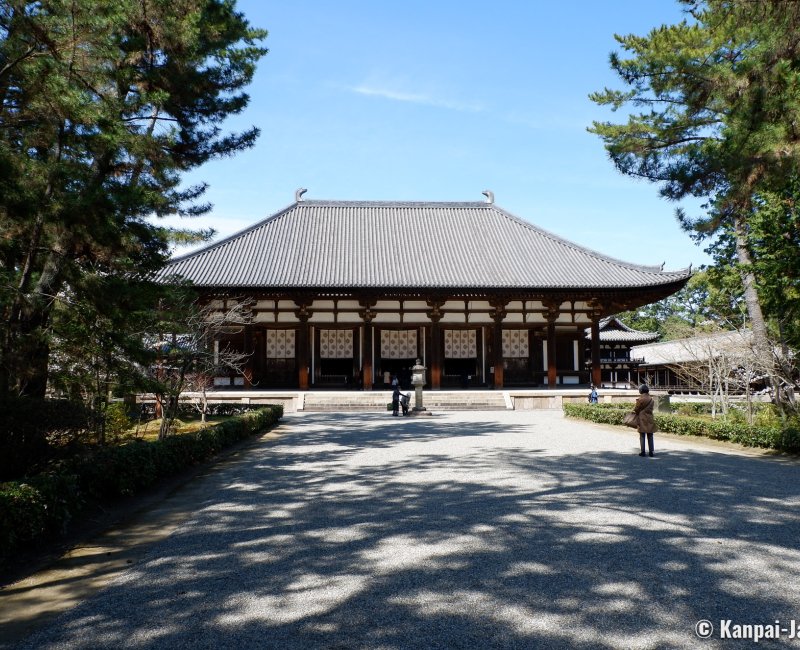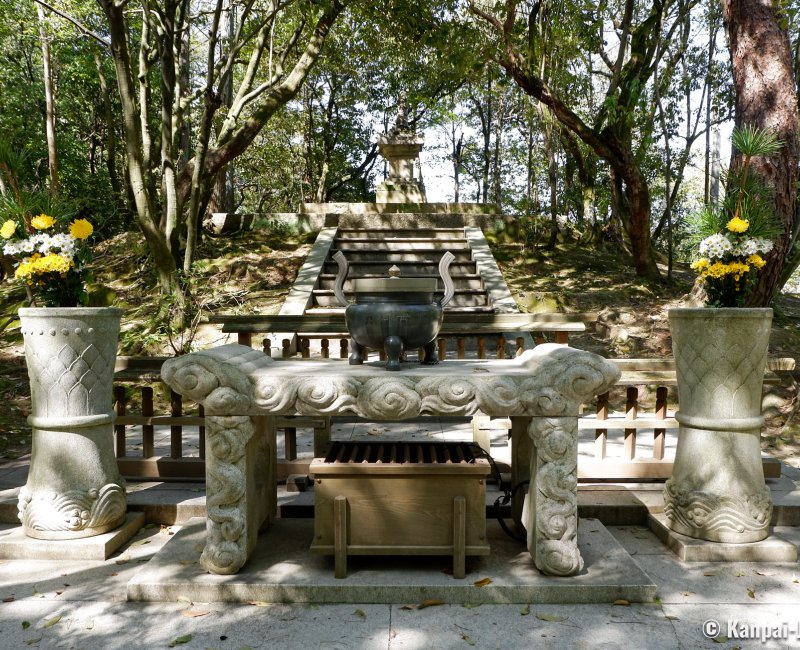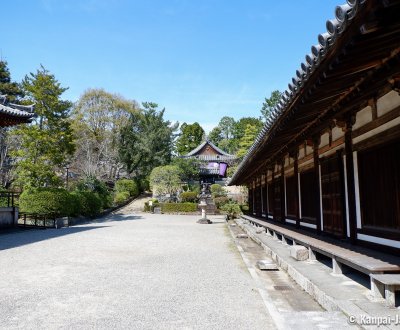Toshodai-ji
The Great Ritsu Buddhism Temple in Nara
Toshodai-ji is the head temple of the Ritsu Buddhist school, located in Gojo-cho district in the west of Nara city. The temple’s founder, Ganjin, was a Chinese priest and a major teacher of Buddhism in the Antiquity of Japan. His influence is witnessed by the authentic and impressive pavilions of the sacred grounds.
The exploration of Nara City’s west side, between Heijo Imperial Palace and Yakushi-ji, allows to discover Toshodai-ji, a temple that played a key role in the diffusion of Buddhism in Japan during the Antiquity, thanks to its founder Ganjin (688 – 763).
Ganjin (or Jian Zhen in Chinese) was a Buddhist monk from Tang dynasty China. Invited by the Japanese emperor, he settled in 754 in the capital Heijo-kyo (later Nara), first at Todai-ji to teach the Buddhist precepts and proceed to the ordaining of many Japanese monks. He then founded Toshodai-ji in 759 where he stayed until he passed away. At the times, the place was an important monastery in Nara for monks in training, as well as a place of learning in a broader meaning. Etymologically, "toshodai-ji" means "Tang’s shôdai monastery", that is to say "the temple inviting monks from Tang China".
It is also the head temple of the ancient Ritsu Buddhist school, also called Risshu (律宗) in Japanese. Founded by Ganjin at the same period, this "school of Discipline" gives a great importance to the respect of the monastic code. However, it started loosing its influence from the Muromachi period (1336 – 1573), during which it was partially placed under the tutelage of the more popular Shingon School. Toshodai-ji, however, remained an independent temple and the Ritsu school’s (last) center in Japan.

Pavilions of generous sizes
The lavish dimensions of the pavilions remind of the long-lasting and major influence of the Toshodai-ji over the imperial power during the Nara period (710 – 784). From the southern gate nandai-mon, visitors are directly introduced to:
- The Main Hall kondo, a beautiful example of 8th century Tempyo Era’s religious architecture. The line of pillars at the front of the pavilion curiously remind of the Parthenon.
- The Lecture Hall kodo, now a building for the administration, is an authentic structure that used to stand in the Heijo Imperial Palace’s grounds, before the Imperial Court donated it to Ganjin. As one of the last remaining monument of this period it is enlisted in the UNESCO World Heritage.
The pavilions display a restrained style harmoniously suited to the place’s spiritual atmosphere. Several wooden Buddhist statues can be seen through the windows, some being designated National Treasures, such at the kondo triptych comprising:
- Rushana Buddha at the center, surrounded by
- Yakushi Nyorai (Buddha of medicine), and,
- Senju Kannon (1,000 arms goddess, nowadays only 953 of her arms remain).
The kodo pavilion is home to a sitting statue of Miroku Nyorai, the Buddha of the Future dating back to the Kamakura period (1185 -1333), and designated Important Cultural Property. Other statues and religious artworks are also displayed in the adjacent new treasure museum Shin-Hozo.

Ganjin’s mausoleum
The second part of the temple is greener and smaller. At the turn of a wooded path, stand several pavilions dedicated to the founder-monk Ganjin, including his grave called Kaizangobyo, located in a quiet and isolated place.
The young leaves in spring 🌸 offer a relaxing shadow, under which one can watch the sun ray lighting up the carpet-like moss at the foot of the trees.
Few Nara sightseers come to Toshodai-ji, however it is one of the key temple for Japanese Buddhism history and a witness to the imperial power of the ancient city of Heijo-kyo.

